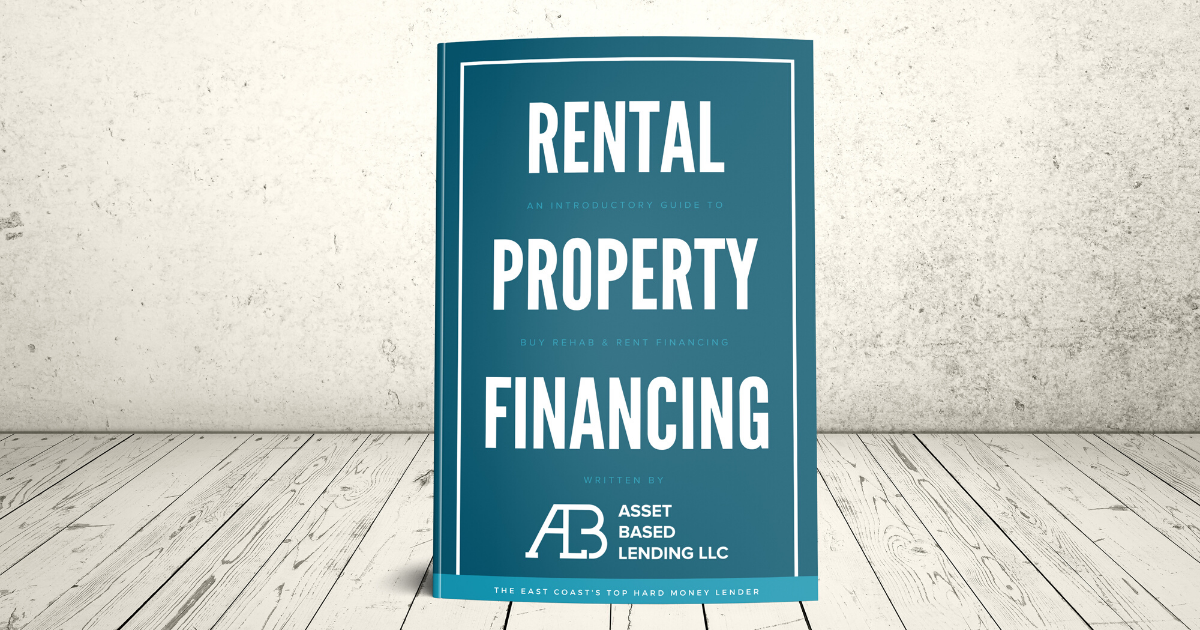While a fix and flip can be a great source of income and a good strategy for your real estate investing business, it does include one major challenge: it isn’t passive. You and your team need to continue finding deals, rehabbing properties, and making sales in order to keep income flowing. That’s why a lot of investors add rentals to their portfolios, whether from the start of their careers or as they go. You can also, of course, do both.
Rentals are a solid component to building long-term wealth and financial stability. Though the real estate market has ebbs and flows, it has always appreciated over time — even after the dramatic crash of 2008. Some periods of recovery simply take longer than others.
The U.S. Census Bureau website includes data on national median home prices for every month since Jan. 1963 (when the median sales price of a new home was $17,200). Though prices naturally fluctuate on a month-by-month and year-by-year basis, they rise consistently over time. The exception is a large dip after the crash of 2008 (as well as a high in April 1990 that preceded a milder recession), though median sales prices did increase again.
Of course, this is an oversimplified look at a complex market. Sales prices vary by region and within states themselves, and a number of other factors are at play in any given investment scenario.
Regardless, the takeaway is this: when you hold property for years rather than months, it tends to appreciate. And as a general rule, the buy-and-hold strategy — assuming you hold for the proper amount of time — lends itself to monthly cash flow as well as a means to build equity. Rentals are in demand in every market — whether that means “market” as in location, or “market” as in time period. City dwellers and suburbanites alike need rentals, and they need them regardless of whether the economy is good or bad.
Introduction To Rental Properties
Rental demand is high, vacancies low
About 35 percent of U.S. households are renters, with the largest group being those ages 30-44. They edge out the 45-64 age group by a slim margin: the former make up 33 percent of total renters compared to 30 percent for the latter.
U.S. Census data shows that the demand for rentals continues to be strong — resulting in low vacancies. Census data for 2019 showed a national rental vacancy rate of 6.4 percent; in the Northeast, it was 5.2 percent (second lowest). Vacancies were on the decline for single-family properties as well as multi-families.
Perhaps not surprisingly, Maine — with more rural areas — ranked lowest for rental vacancy rate in the Northeast at 2.9 percent in the fourth quarter 2019. New York was at 5.1 percent and New Jersey, 4.6 percent.
How much do renters pay? While the rate obviously fluctuates dramatically between an urban area like New York City and a rural or suburban space, in 2019, the median asking rent in the Northeast was $1,215. Nationally that figure was $1,005.
Other benefits to owning rentals
Here’s one more advantage to consider with rentals: rent prices don’t tend to fluctuate as wildly as home prices sometimes do, making the rental business model more predictable and reliable on the whole.
You can be confident that the numbers you run today will hold true six months or even a year from now (you’d of course re-run them). A two-bedroom apartment in a specific neighborhood in your area doesn’t jump from $1,000 to $1,500 in a year, nor does it fall that quickly, either — not that rents tend to fall.
Of the 382 metropolitan areas in the United States, the median gross rents did not change in 156 of them between 2007 and 2011, and also 2012 to 2016.
Census data backs this up: of the 382 metropolitan areas in the United States, the median gross rents did not change in 156 of them between 2007 and 2011, and also 2012 to 2016. (Median gross rent includes contract rent plus the estimated average monthly cost of utilities and fuels.) Seven areas couldn’t be compared because of boundary changes, and of the remaining, increases outnumbered decreases four to one.
Rentals can be conducive to favorable tax breaks, particularly depreciation — always consult your CPA on matters like this. In short, the federal government allows you to take deductions for wear and tear on rental properties and to write off a certain portion against the income you’ve generated. This can significantly reduce your tax burden, though again, consult your CPA to make sure you calculate properly and keep things legal. (And by the way, depreciation does not apply to your primary residence.)And times have changed. Whereas societal attitudes once favored homeownership as the gold standard, that’s not necessarily the case anymore. It’s no longer the norm for someone to buy a house and remain there for 40 years. According to an article on the National Association of Realtors’ website, the median duration of homeownership in the U.S as of 2018 was 13 years — which is up several years from a decade earlier.
Many people decide against buying a home even if they can afford to purchase, and there are valid reasons for people to choose to rent rather than buy. Consider these scenarios:
- They have a job where they get relocated regularly
- They’d rather use the downpayment money to invest elsewhere
- They don’t want to commit to a location for an extended period of time
- They want someone else to be in charge of capital repairs and other tasks that go with owning a home
- They’re self-employed and earn a good income but don’t qualify for a traditional home loan
- Some apartment or condo buildings have desirable amenities like fitness centers, pools, or lounge areas
The passive income fallacy
Many investors find rentals appealing as a way to build passive income. Purchase a property, get it move-in ready, find tenants, then sit back and collect rent checks every month.
Not so fast. In the long term, rentals can indeed be a lot more hands-off than a flip — but that doesn’t mean they’re entirely passive. After the purchase and possible renovation period, rentals include quite a bit of hands-on work. Before you buy a property and call yourself a landlord, be sure you fully understand the commitment. These include, but are far from limited to:
- Find and screen tenants. Not only do you need to decide upon your marketing strategy, but you need to comply with the law. Make sure you know what language you can and cannot use in your ads as well as the criteria that’s allowed — or not — when ruling potential tenants out.
- Collect rent. Will you have tenants mail you a check or will you collect rent electronically? Do you have a late fee policy in place and a procedure for collecting past-due rents or starting on eviction proceedings? Do you understand the tenant-landlord laws in your state?
- Repairs. Everyone mentions the hypothetical clogged toilet scenario, but it’s a serious question: What happens when a tenant calls about a clogged toilet at midnight or on the weekend? Who’s going to field the call and who’s going to head out in a timely manner to fix it?
- Maintenance. Even if you hand off mowing and shoveling snow to your tenants, you’ll have maintenance concerns. These range from having the septic system pumped to maintaining the furnace or keeping smoke detectors in working order.
The list goes on. These shouldn’t be deterrents, but to serve as a reminder to have systems in place to handle these situations. As your portfolio grows — or even from the first rental, if the budget allows — you may want to hire a property manager.
What type of rental should I start with?
There’s no one-size-fits-all answer to this question. But a good rule of thumb: start small and build your way up.
How small? That depends. You can rent out a lone single-family house at a profit, though many investors choose to start with duplexes or fourplexes. With a multifamily property, you learn to manage multiple units and tenants but still keep things manageable.
You might also consider whether to specialize in Section 8 housing. Section 8 is a housing choice voucher program that is a form of government rent assistance. ProPublica reported that nearly 5 million people nationwide lived in a household that used a voucher to help pay some or all of their rent. Section 8 rentals have their own sets of rules — including inspections prior to a tenant moving in and regular inspections thereafter — and the law can vary from state to state, so be sure to do your research and due diligence before diving in. Also be aware that, as of Dec. 2019, 14 states had passed laws banning landlords from rejecting tenants based on their source of rent income, including Section 8 vouchers.
When evaluating any real estate investment strategy, the key is to be honest about your level of experience and, perhaps, your learning curve. You have a lot less at stake with a six-unit building than you do with 20 or 50 units. There are also a lot fewer moving parts, allowing you to handle incoming issues, adjust, and develop a system to adapt to larger properties.
Whatever route you choose, it’s important to document your systems so you can make them repeatable. Write down every step of the tenant-screening process and use the same forms every time, for example. This helps you become more efficient and sets you up to hand off certain tasks along the way, and serves another important purpose as well: you stay on the right side of the law when you treat everyone the same (not to mention it’s ethically important as well).
Here are a handful of pros and cons to different property types:
Single family
- Pro: Easy to understand and get started. You’ve got one house, one set of tenants, one tax bill. Not too much multi-tasking happening here.
- Pro: More consistent tenant base. Tenants tend to stay in single-families longer than apartments or multi-families. Turnovers can be pricy, so a lower turnover rate can help your bottom line.
- Con: It’s the “all your eggs in one basket” scenario. If you happen upon a bad tenant or a pricy repair, it’s all absorbed by that one property.
Multi Family (2-4 units)
- Pro: You spread your expenses around: One roof, four tenants. Same for the driveway, the siding, the yard, etc.
- Pro: When a tenant moves out, you still have income from the remaining units. Ideally, you’d immediately replace a tenant with another tenant, not missing a month’s rent. In reality, you’ll likely experience a gap while you either search for a replacement and/or take care of turnover tasks like painting and other minor spruce-ups.
- Con: Pricier up-front investment than a single family, and it may take a little longer to fill all of the units unless you buy a property with existing tenants.
Multi-Family (5+ units)
- Pro: Continued economy of scale with the ability to spread expenses, and each vacancy makes less of a dent in your bottom line.
- Pro: You have a greater ability to control the value of the property, which, at five units and up, is considered commercial property and valued on its income-producing capabilities.
- Con: Higher purchase price than smaller properties can make this tricky for some investors to navigate.
- Con: While not necessarily a con, you’ve got a lot more on your plate and a lot more to keep track of. To return to an earlier point, did you make sure to document your systems so you have a process in place?
Rental Loan Financing: An Overview
Conventional financing for rental properties
There’s no denying it: investment properties have historically been tricky to finance with a conventional loan, especially for a new investor. Banks view investment properties as higher risk, and rightfully so, but they seek to mitigate that risk with strict criteria that can be incredibly difficult to surmount.
Investment property loans are different from primary or second home loans. By definition, an investment property is one you don’t live in — which is where the higher risk (and higher interest rates) comes in. It makes sense that a borrower would cut and run on an investment property before missing payments on a home they live in.
Understand also that conventional loans need to meet the lending standards of Fannie Mae or Freddie Mac, government-sponsored agencies that guarantee the mortgages if those standards are met. This is different than FHA or VA, in which the federal government itself backs the loans, but it nevertheless comes with mounds of red tape and paperwork.
Translation: you won’t close quickly. (FHA and VA loans may be available to investors, though you typically need to live in one of the units; VA loans are only available for primary residences.)
Anything up to four units is considered residential and falls under residential lending guidelines. Therefore, they are mortgaged the same way a single-family is. This has sometimes proved beneficial because an investor may qualify for FHA financing and as little as five percent down. Five units or more is considered commercial property. This means it’s valued based on the income it produces. As mentioned earlier, this gives you some level of control over the property value: increase the income, increase the value. (Or lower the expenses to achieve the same outcome.)
You’ll also need excellent credit and a squeaky clean record on any existing mortgages and loans. While the bank will evaluate the property itself, YOU are also under scrutiny. A conventional lender will want to know your debt-to-income ratio (DTI) and how much you have in reserves when deciding upon your downpayment amount and specific credit score requirements.
Your debt-to-income ratio is your total monthly debt payments (credit cards, loans, mortgage) divided by gross income. If you have $2,000 in monthly debt and $6,000 in gross income, your DTI is .33, or 33 percent. Lenders prefer a rate lower than 36 percent, with no more than 28 percent going toward rent or mortgage.
Projected rent may or may not count toward your income. Check the latest guidelines, but Freddie Mac currently requires a borrower to have two years of landlord experience (proven via tax filings) if they want to count projected rent as income; Fannie Mae does not have that guideline.
You’re also limited to 10 conventional mortgages at a time. This may sound like a lot at first, but if you’re serious about growing your rental portfolio, you can easily get to 10 properties within a couple of years.
Typical Criteria
With all that said, here’s a list with most of the typical criteria needed with conventional loans:
- Downpayment: At least 20 percent down, sometimes more. Mortgage insurance won’t cover investment properties so you’ll need at least 20 percent down for a traditional loan, usually 25 percent or more. And that’s for each loan you get.
- Assets and Reserves: This varies by lender but usually equals a minimum of three months’ worth of liquid reserves, often six. Multiple rental properties means reserves for each property.
- Excellent Credit Score: Anything less than a 740 credit score and you’re likely to pay points or higher interest rates. A point is 1 percent of the loan.
- Strict DSCR rules: This one pertains mainly to asset-based lenders, who evaluate the income a property will generate. DSCR stands for “debt service coverage ratio” and represents a business’ net operating income divided by its total debt service obligations. A “1” is essentially a break-even proposition, and no bank will loan on that. Most lenders want a DSCR of at least 1.25.
Once you get past all of the above, think you can fix a place up and refinance or get a line of credit? Think again. Many lenders have a “seasoning” period, which refers to the amount of time you must hang onto the note before you can do any of that.
The Buy Rehab And Rent Strategy
Investors have a number of ways to build their rental portfolio. One route is to purchase a turnkey property — one that’s filled with existing tenants, has documentation regarding income and expenses, and is ready to go. This can be a great scenario if the property is profitable (verification is of the utmost importance), but also understand that you pay top dollar. An owner will understandably expect to receive a premium price for a property that simply needs to be handed over.
With a little more work and creativity, you could instead look for the diamond in the rough and potentially land an amazing deal that results in monthly income as well as long-term profit. Consider a buy, rehab, and rent. As the name suggests, this is a property that will need work before it’s tenant-ready. The extent of the rehab is up to you; as when exploring rentals, be honest about your experience in rehabs when going this route. Rehabs can spiral fast if you don’t know what you’re doing.
Benefits of a buy rehab and rent strategy for building a rental portfolio:
- Lower purchase price. Any deficiencies should be reflected in the purchase price — and the more work, the bigger the discount. You will often find a lower cost of entry when you allow for a fixer-upper in your investment plans.
- Less Competition. Sometimes all it takes is stinky carpets to weed out the majority of the buying competition. Investors shouldn’t be put off by superficial issues, but with single families in particular, most buyers don’t know how — or simply don’t want to — look past issues that might look or smell gross but are easy to fix. In multi-families, a lot of investors seek the turnkey properties that come with a rent roll and solid bookkeeping. There’s less competition for the ones that need work and marketing before they’re ready.
- Refinance Options. If you buy at a discount and rehab properly, you should build equity in the property fairly quickly. This is a great benefit, as the option to refinance allows you to shop for your next rental a lot sooner than you might otherwise have. (You might have heard this referred to as the “BRRRR” method — buy, rehab, rent, and refinance. Same principles!) In fact, ABL can help transition you from a hard money loan to a long-term loan. No need to juggle lenders.
How to finance a Buy, Rehab, and Rent Property
Ok, you’re convinced: rentals are a great strategy for producing income and the Buy, Rehab, and Rent method makes sense for your business model.
Now what? Get your hard money financing!
A great first step is to get pre-qualified for a loan. This allows you to know how much you can spend and helps tighten your search criteria. Note that although “pre-qualified” and “pre-approval” are often used interchangeably, they’re not exactly the same, and neither is final. The loan isn’t technically approved until later, when the property is under contract and you’re about to close. However, a pre-qualification helps you answer a number of questions up front, from the price point to any gaps you might need to fill in, i.e. working to improve your credit score or securing a bigger deposit. You’ll also get a peek at the process and likely build a relationship with a lender as well.
Next: Find a property.
Nothing happens without a good deal, so it’s time to get to work identifying one! With a pre-qualification in place, you’ve got a solid idea of what to look for. And when you work with a company like ABL, you’ll be educated, too. A local loan officer who understands your business will walk you through potential loan programs and deal economics. This is vital when you’re analyzing properties and negotiating with sellers.
You can search on the MLS with the help of a trusted real estate agent; look online via sites like Zillow, Trulia, or Redfin as well as Craigslist and For Sale By Owner sites; work with a wholesaler; use direct marketing — or all of the above. Most seasoned investors wind up working all of those angles throughout their careers.
When you’ve found a property you want to buy, it’s time to move things forward. One key figure to know is your loan-to-value ratio, which is what the loan is based upon. While conventional lenders typically consider only the property’s as-is condition when evaluating and processing a loan, a hard money lender will evaluate its potential and use a different set of criteria. In short, the hard money loan is essentially secured upon the value of the property more than your personal net worth or credit (though these still count).
This is considered higher risk and the interest rate reflects that. A hard money loan is also a short-term loan, generally due in a year, sometimes two. The idea is to fix the property and sell it or refinance into a traditional loan at a lower rate. What does this have to do with loan-to-value ratio? A hard money lender will take your After Repair Value (ARV) into consideration, while a conventional lender usually doesn’t. And you will likely be able to finance most of the rehab costs.
You’re still responsible for having some “skin in the game” and will need to produce some portion of the purchase. The amount varies by loan product and property. A lender will sometimes check your credit, but not always. Regardless, it’s imperative that you do your due diligence and have accurate numbers; this will go a long way toward helping you finance that first property and then establishing a reputation as a reliable borrower who a lender will want to do repeat business with.
Before final loan commitment, the lender will want to see the property to verify condition and repairs, and to confirm whether the purchase price and the estimated rehab figures are accurate. In non-traditional transactions, this can happen quickly; while a conventional purchase often takes four to six weeks to close, you can close in 10 days or less with a lender like ABL.
Rental Property Loans and Financing With ABL
For many real estate investors, financing is the biggest headache — and hurdle — of all and threatens to take the fun (and sometimes the profit) out of your business. When you finally find a reputable hard money lender, you’re still only halfway there at best. Then you need a lender for the refinance.
At ABL, we can help you avoid the hassle of dealing with multiple lenders and points of contact in your Buy, Rehab, and Rent business because we’re built for investors.
Starting with the initial purchase, we can provide the quick close you need, unlike a conventional lender. As a hard money lender, we are agile and understand the rehab business, and we’re not weighed down by red tape when it comes to making loans. We’ll finance the purchase and renovation bridge loan at up to 90 percent of purchase and 100 percent of rehab, and close in 10 days or less.
Then if you choose to keep a rehabbed rental property, we can help with the refinance. As mentioned earlier, conventional lenders can make the road tough, whether it be seasoning requirements, strict DSCR rules, credit checks, or the like. Our special bank partnerships offer the best of both worlds, allowing you to refinance out of hard money loans without the hassle of typical bank financing.
Our rental loan programs offer options designed to suit the various business plans of investors including no doc loans, no income verification, and no seasoning requirements. With no minimum seasoning requirements, as soon as a property is in rentable condition, you can start the process of refinancing and pulling cash out at market value. This means you are out of a high interest hard money loan, and into a lower interest rental loan and can likely leverage the new equity in the property to purchase your next investment.
We hope you’ll consider us when searching for a lender for your Buy, Rehab, and Rent. For more information, visit our website at www.ablfunding.com, email us at [email protected], or give us a call at (201) 942-9089.







0 Comments